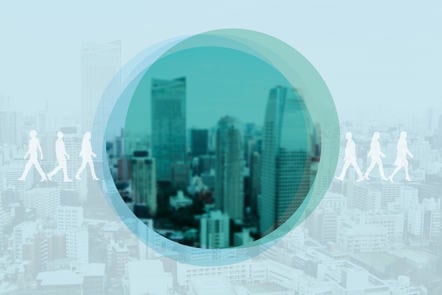What is recommerce and will it take off?
Discover the future of recommerce and the potential benefits it can have on society, from reaching sustainability goals to repurposing useful materials.

Over the past few decades, environmental issues have crept up the political and cultural agenda. Even mainstream business leaders and world leaders agree that the habit of cutting down vast swathes of forest, pumping plastic into the ocean and spewing toxic chemicals into the atmosphere is less than ideal.
So, what’s the alternative? The more common answers are usually rooted in three environmentalist R’s: we can reduce the amount of things we consume; we can reuse the things we’ve already used once; and we can recycle the things that can’t be used again.
The order here is important. After all, it’s easier to use something again than it is to break it down into its basic components and reform it into something else. Therefore, if we can reduce our use of something, then we should try to do that before we think about how we can reuse or recycle it. In that sense, the three Rs are a little bit like Asimov’s three laws of robotics.
Recycling has taken up much of the focus over the last few decades. But thanks to modern technology, we’re reducing and reusing a lot more effectively than ever before. Smart meters mean we’re able to use less energy — both as individuals and as a collective.
A new technology in online commerce might also help us to reuse our things more effectively. While our modern shopping habits have been blamed for much of the problem, retail might also provide a potential solution in the form of ‘re-commerce’ — that is, the practice of selling, trading and renting used products using new online tools.
What makes recommence different from traditional second-hand?
In principle, there’s very little to separate recommerce from the traditional second-hand shop. If we’ve been buying used products for thousands of years, then what does this fancy new term mean?
It’s easy to draw a fairly clear line between recommerce and the traditional second-hand market. It’s all to do with the way in which deals are arranged and organised.
The sale or rental of a used item involves quite a lot of risk and trust on the part of both the seller and consumer. There are also a series of logistical problems to consider. How can sellers make would-be buyers aware that there’s a product for sale? How can buyers be sure that a given seller is trustworthy?
Recommerce provides the answers, allowing for entirely new ways of doing business. It’s increased the viability of many entirely new kinds of recycling and upcycling businesses, and provided a use for still-functional products that might otherwise have gone to landfill.






Current examples of recommerce
Second-hand books
Books spend most of their lives on shelves, not getting read. This is rather wasteful when you think about it. But running a second-hand bookshop can be an administrative nightmare.
An online second-hand bookshop eliminates much of this. Such stores are larger and the stock is more easily catalogued. If a customer is looking for a particular book, then they need only search for it. New additions to the library can be swiftly catalogued, meaning that second-hand books stores are currently in rude health.
Second-hand clothing
Recent trends in fashion indicate an increased appetite for second-hand clothes. The UK public has, according to recent polling, around £10 billion worth of never-worn clothing hanging in their wardrobes. This equates to 588 million items for women and 223 items for men.
A variety of reasons are offered for this. Customers may buy an item with a view to fitting into it after losing weight. Customers may buy items for a single special occasion and then never wear them again. And, naturally, familiar hoarding behaviour may also be at work.
There is currently a widespread appetite for de-cluttering, especially among younger people. Recommerce removes much of the friction that prevents us from getting around to selling those unwanted clothes. When you only have to aim the camera on your phone to place an ad, you’re more likely to finally get rid of those items you no longer need.
Buying second-hand garments is also a more sustainable option for the eco-conscious consumer, and again, a lot of younger people are falling into this category. You can learn more about this in our sustainable fashion blog post.
Recycled technology
A problem for those looking to recycle technology is perceived obsolescence. Customers might view that their old laptop or fridge no longer has any value, and therefore throw it into the loft to never see the light of day again.
But many of these items are, in fact, perfectly useful. In some cases, they actually appreciate considerably. In the late 1980s, for example, analogue synthesisers were thought to be on the way out. But now, some of those original models are in high demand. The same can be said of classic game cartridges and the original systems that powered them.
Of course, even if the technology itself has been rendered completely obsolete, the raw materials from which it’s made can still be stripped out and reused. Components can be harvested, along with raw metals.
Diversifying a supply chain by using recycled materials as well as freshly extracted ones can also leave us less vulnerable to shocks in the supply of a given material.
Why recommerce is necessary
Finite resources
When it comes to certain raw materials, manufacturers are faced with inherent supply problems. You might hear talk of ‘peak copper’ or ‘peak aluminium’, which refers to a point at which we can’t produce any more of a given metal.
Let’s take copper as an example. There’s only so much of it available beneath the earth. But it’s used extensively in just about every electrical device there is thanks to its excellent combination of malleability, conductivity, and corrosion-resistance.
In contrast with fossil fuels, which are notoriously difficult to recycle, metals can be used again and again. Consequently, extracting these metals from old laptops, phones, and pipes is often worth doing — provided that the price of the raw materials makes it commercially viable.
Certain kinds of rare-earth materials, like neodymium, are used extensively in magnets and other components. Despite how their name sounds, these materials are actually quite plentiful — but extracting and refining them often imposes a considerable environmental cost, since they’re often highly toxic.
Anything that can be done to reuse and recycle these materials is therefore worth doing. We should note that some metals are greener than others, and that alternatives might need to be found in some cases.
Sustainability
As buzzwords go, sustainability is among the more ubiquitous. Nowadays, businesses and governments will often describe a favoured policy or product as ‘sustainable’. But that doesn’t mean that we should be cynical about sustainability in business, or that building a sustainable business isn’t important.
We can say that something is ‘sustainable’ when it could, theoretically, be carried out indefinitely without any cost to the natural world. For example, a carpenter might use a tree’s worth of wood in a month, but plant twenty trees a year. Such a business could justify themselves being called ‘sustainable’. Anything that can’t be grown, after all, has to be mined — which is an adage that gives timber a natural advantage.
But these businesses tend to be the exception. Clearly, there are degrees of sustainability. Or to put it another way, it’s still worth going for the occasional jog, even if you’re never going to win Olympic Gold at 10,000m.
Rather than strive for a hypothetical state of perfect sustainability, we might better use our time and energy looking at where we’re going badly wrong, and seeing how we can correct our worst mistakes. Businesses can do this through things like environmental audits, and more general education and awareness-raising.
Recommerce is a powerful means of injecting sustainability into our shopping and selling habits. Suppose that one day your vacuum cleaner breaks down. You might consider a range of options — some of them more sustainable than others.
At one end of the spectrum, you could throw the device away and get another. A more sustainable option, however, would be to carry out a repair. In practice, this might not be feasible. You might lack the technical skill to carry out such a repair. You might not have a replacement motor to hand.
This is where recommerce brands come in. You can simply sell your old vacuum cleaner, and have a competent reseller pick it up, carry out the repair, and move it on. You, meanwhile, can pick up a different vacuum cleaner that’s been through the same process.
The end result is that two people get a working vacuum cleaner, two fewer vacuum cleaners go on to the scrapheap, and the environmental cost of building two new vacuum cleaners from scratch is eliminated.




The growth of recommerce as a business model
According to several surveys, the Covid-19 pandemic has caused many to reevaluate their shopping habits. This is particularly true in the case of millennials and generation Z, but it’s also the case with older generations.
While everyone’s experience of lockdown was different, a broad trend has been that many people were surprised to find the things that they once considered important — such as regularly buying a brand new set of speakers, shoes, or novelty doorbells — were actually fairly trivial and not missed.
While it might not have led to a wholesale rejection of consumerism, many did conclude that the previous levels of spending were difficult to justify.
These trends are encapsulated in the thredUp’s 2021 resale report. Citing GlobalData findings, they expect resale to grow eleven times faster than the broader clothing sector, arriving at $77 billion by 2025. This is largely informed by consumer surveys, which have found that many consumers want to buy more second-hand items in the future.
Omnichannel retailing
Here’s another buzzword that’s not often clearly defined. What is omnichannel retailing? Put simply, the term refers to a customer experience that’s cohesive across several different (you’ve guessed it) channels. So, whether a customer is walking into a brick-and-mortar store, or picking up the phone and calling in, or browsing a website, or sending messages via social media, they’re going to be talking to the same company.
According to Harvard Business Review, the modern customer is in the habit of conducting research on several different channels before making a purchase. They might become aware of a product via an online advertisement or influencer endorsement. They may then go into a physical shop in order to inspect the product in question — whether it’s a new dress or a light fitting. Then, finally, they could look at their phones and finally make the purchase with a thumb swipe.
Omnichannel retailing is distinct from multi-channel retailing. You’re not merely communicating with your customers in several different ways, you are gluing all of these steps together to create a cohesive experience for the customer.
If the upward trajectory of modern re-commerce is to continue into the future, then the omnichannel experience offered by established high-street stores is going to need to be replicated by these burgeoning second-hand and used markets.
Sustainable Development Goals
The Sustainable Development Goals form a list of seventeen global objectives, set up in 2015 by the United Nations General Assembly. Sustainable development includes getting rid of poverty and hunger, providing education, creating world peace and moving toward net zero carbon emissions.
Of particular interest to environmentally-conscious consumers are the eleventh and twelfth goals. These respectively look to foster ‘Sustainable Cities and Communities’ and ‘Responsible Consumption and Production’.
SDG12 is in turn divided into eleven targets. The first eight of these are ‘outcome’ targets. The remaining three are ‘means of achievement’ targets. In the former category, we have reducing food waste and optimising our use of natural resources, among others. In the latter are programmes such as supporting developing countries and building new technologies and establishing new techniques to more accurately measure our progress.
Recommerce is undoubtedly going to be crucial in abiding by target 12.5, which has the full title of “By 2030, substantially reduce waste generation through prevention, reduction, recycling and reuse”.
Any businesses that aspire to greenness should be aware of SDG. For those companies, sustainable development is now high on the agenda. Many believe this philosophy should extend to every department — from procurement to Human Resources.
We should expect UN member states to create the environment that businesses of this kind need to thrive — which means building green infrastructure and establishing clear rules on shady practices that promote narrow business interests over broader environmental ones. Most notorious among these are ‘right to repair’ laws, which seek to guard against planned obsolescence.
A right to repair law is, in theory, designed to empower customers to repair faulty appliances themselves or with the help of a third party. If the UN’s targets are to be met, then the UK and countries like it will need to create a regulatory environment that does this. Among the main beneficiaries of legislation like this would be the recommerce industry, and businesses that take corporate social responsibility obligations seriously.
What might the future hold?
A thriving recommerce sector could potentially work as part of this sustainable future. It seems likely that we may see a considerable cultural shift, with shoppers of the future seeing the purchase of brand-new items as an occasional luxury, rather than the norm.






